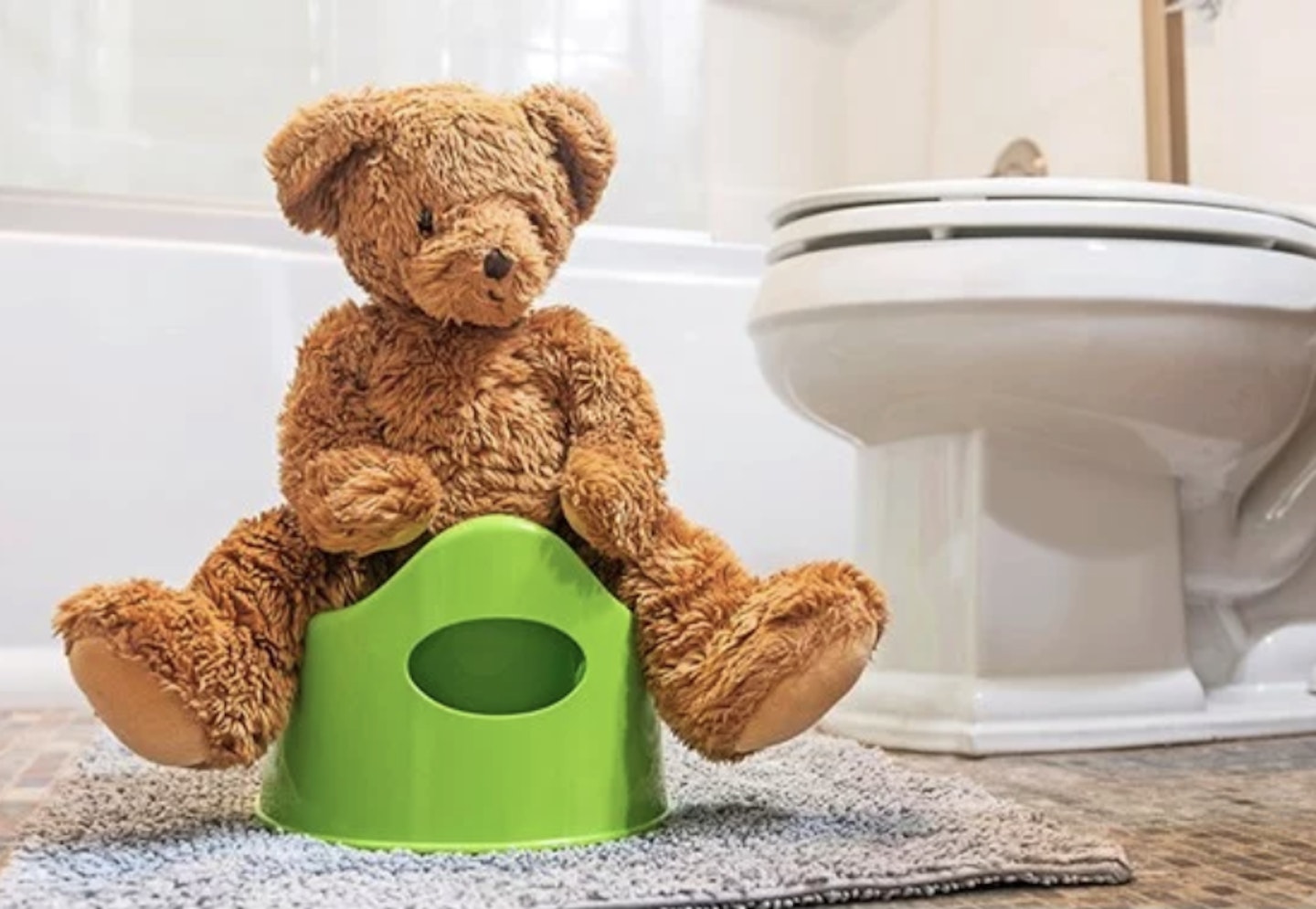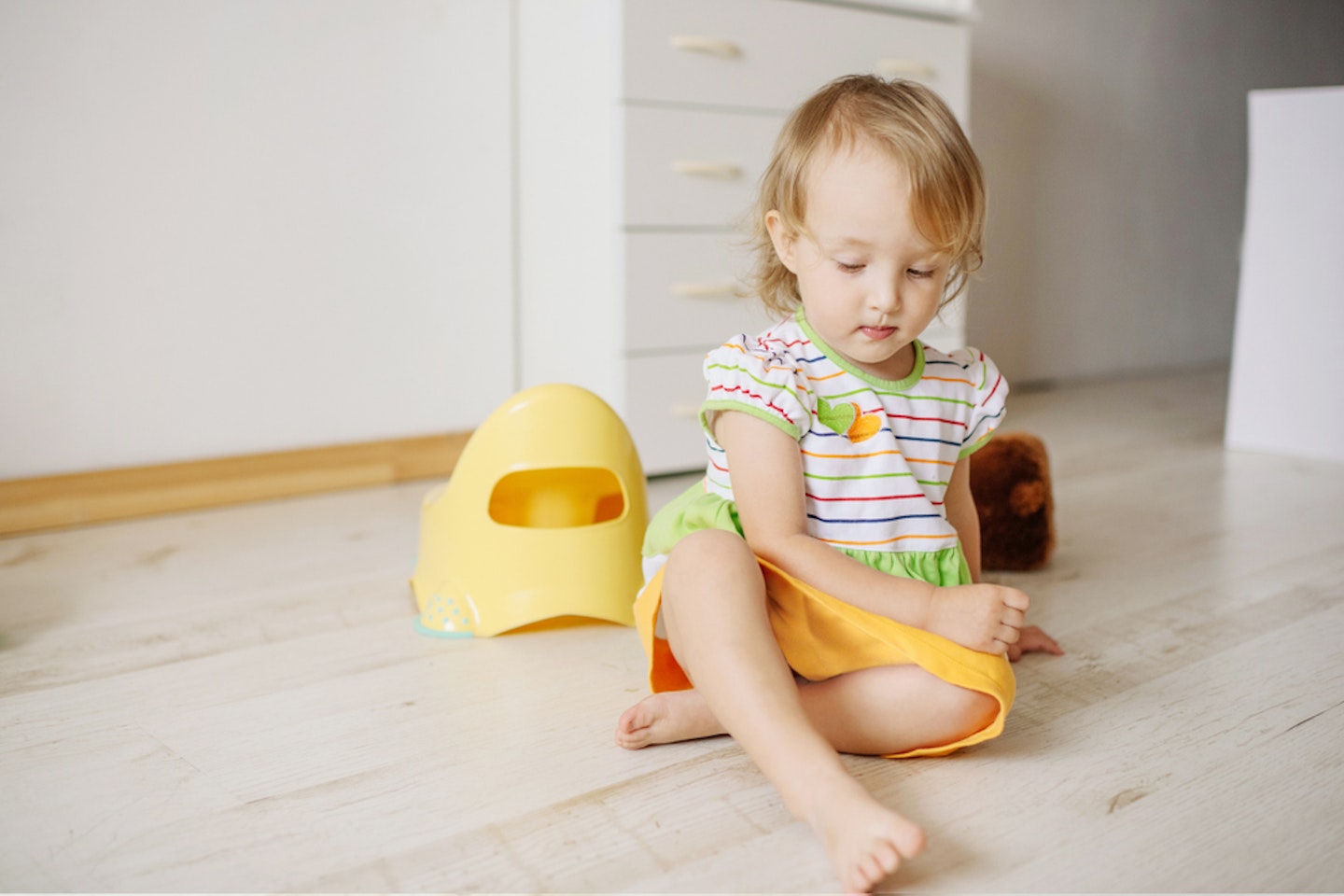Most parents are desperate to get their little girls out of nappies, but it’s not always easy encouraging toddlers to use the toilet. We’ve come up with some expert potty training tips for girls that will make the whole experience a lot less stressful.
In this article:
-
Let her learn by watching
-
Get her some cool underwear to motivate her
-
Get to the potty ahead of time
-
Teach her how to wipe
-
Reward good potty behaviour
-
Buy the right equipment
-
Increase the fun factor
-
Celebrate the good things!
When to potty train a girl?
On average, because their communication skills are more advanced, girls tend to be potty trained three months earlier than when boys are potty trained. That said, what works for one child doesn’t for another; they can start as early as 18 months or as late as four.
It’s not easy knowing when she’s ready to be potty trained but there are some signs you can look out for:
Potty training your baby girl - is she ready?
 1 of 6
1 of 61) Can she tell you her nappy's wet?
 2 of 6
2 of 62) Is she interested in toilets, potties and wees?
 3 of 6
3 of 63) Can she follow simple instructions?
 4 of 6
4 of 64) Will she sit quietly in the same place for two minutes?
 5 of 6
5 of 65) Can she pull her leggings up and down?
 6 of 6
6 of 66) Does she exhibit good bladder control and go for two hours without weeing?
If the answer to any of these is ‘no’, it’s probably better to wait a little longer. If the answers are ‘yes’, then she’s ready.
Timing is crucial. Don’t potty train her if there’s something else big going on at the same time, like a new nursery, new baby or house move. Many parents also wait till the summer to train girls, as it’s much easier for them to get onto the potty in time when they only have to lift up a light summer dress – it’s a lot less washing for you too!
How to potty train a girl
Let her learn by watching
Toddlers learn by watching what others do so before you start anything instigate an open-door bathroom policy. Strange as it may feel, talk to her about what you are doing on the toilet and explain that mummies and little girls sit down to wee, while daddies and little boys stand up. Swap her nappies for pull-ups and encourage her to take them on and off herself when she’s getting dressed.
Get her some cool underwear to motivate her
If she manages to take all this in her stride, it’s time to plan a fun mummy-daughter shopping excursion. Make sure she knows that this is a special trip – maybe treat her to a babycino on the way – and let her choose some pretty knickers for herself. Whether they’re emblazoned with her favourite Disney princess or cartoon character, the important thing is she’ll want to keep them clean. She might end up soiling several in the first few days so, to avoid running out, buy between seven and ten pairs to start off with.

Get to the potty ahead of time
During the early stages of potty training, expect to take her to the bathroom or the potty every hour or so and encourage her to go, rather than waiting for her to tell you. It’s usually the wees that happen first and the poos come later when they’re feeling more confident. Look out for signs that she needs a wee or a poo like hopping, holding her bottom or concentrating on something that’s not immediately apparent. Make sure you have several potties at hand – a minimum of one on each floor of your house so you aren’t running around trying to find them in an emergency. Eventually, she’ll be able to go and get the potty and use it for herself, another reason it’s handy to have them within easy reach.
Teach her how to wipe
When potty training girls, it’s important to explain the correct way to wipe a bottom, especially after a poo, to avoid UTI infections. Girls should wipe from front to back to prevent spreading bacteria from the bowel to the vagina. If this concept is too complicated for her to understand initially, teach her to pay the wet area dry with toilet paper. Symptoms of UTIs to look out for include frequent weeing, pelvic and tummy pain when she wees and accidents despite previously having good bladder control.
Reward good potty behaviour
Of course, accidents are inevitable but don’t make a fuss. Calmly clean everything up and remind her to tell you when she needs the toilet next time. To reward successes, start a “treat bag” and fill it with cheap presents like plastic jewellery, pretty hair accessories, crayons and stickers (if you can avoid sweets). When she does go to the toilet and washes her hands, let her choose something from the bag to keep.

Buy the right equipment
If she’s struggling with the concept of potty training, buy your little one a baby doll that wees herself. She can have fun feeding her a bottle of “milk” and then sitting it on the potty and watching the “wee” come out. It’s a good way to teach her about using a potty and, if you sit the doll and her on the potty at the same time, she’ll feel like she’s being toilet trained with a pal.
Reading a book on the toilet is a great way to keep little girls entertained and it will help her to relax. Princess Polly’s Potty Book uses bright fun pictures and a “cheer” sound effect as it takes children through the story of how Princess Polly learns to use a potty.
As well as a potty and a training seat, invest in a travel potty that she can use when she needs to go and you’re out and about. The Pottete travel potty, which can easily be folded down and stored under a buggy, makes an emergency toilet break a no-hassle affair thanks to its disposable bags. As well as a potty, it doubles up as a training seat that can be folded out and fitted onto a public toilet.
Many toddlers have trouble reaching the toilet and sink so buy a stool that they can move into position and climb up on to.
Increase the fun factor
Personalise potties by writing her name in a glitter pen and adding fun stickers so she feels like it’s something special.
If you have trouble keeping her interest, let her choose some food colouring to put into the toilet and get her to wee onto it. She’ll love watching it change colour.
You could also buy knickers a size bigger so she can easily get them on and off.
Doing poos on the toilet might be trickier than wees. Encourage her to stay sitting by downloading a new game onto an iPad or buying her a new book that’s kept only in the bathroom for toilet times.
Celebrate the good things!
Your little one is doing really well by this point, so it's important to reward her good potty behaviour, no matter how long it takes.
Read more on Mother&Baby:
Have you got any tips for potty training girls? Share them with the Mother&Baby community on Facebook and Instagram.
Why not join thousands of mums and start your very own Amazon Baby Wish List? They're absolutely free to create and perfect to send to your family, friends, and colleagues to make sure you're getting the baby products you really need...
